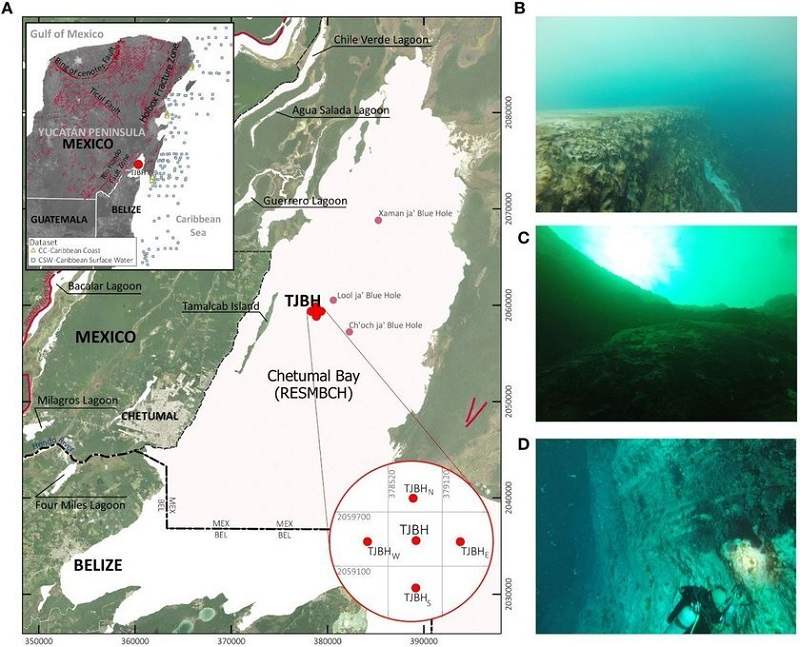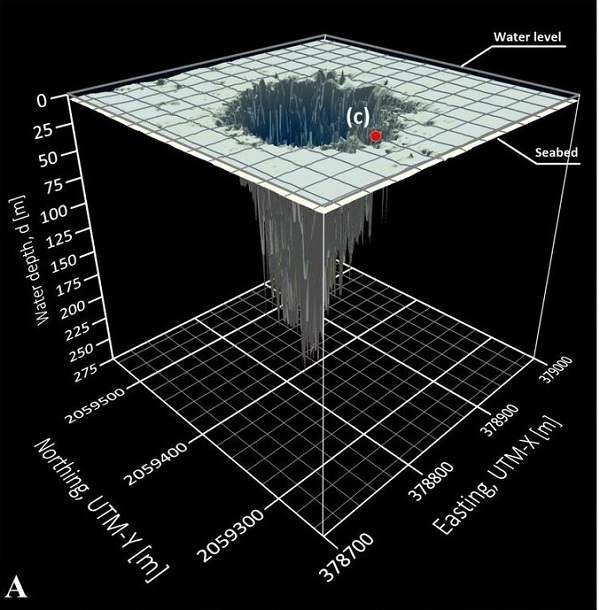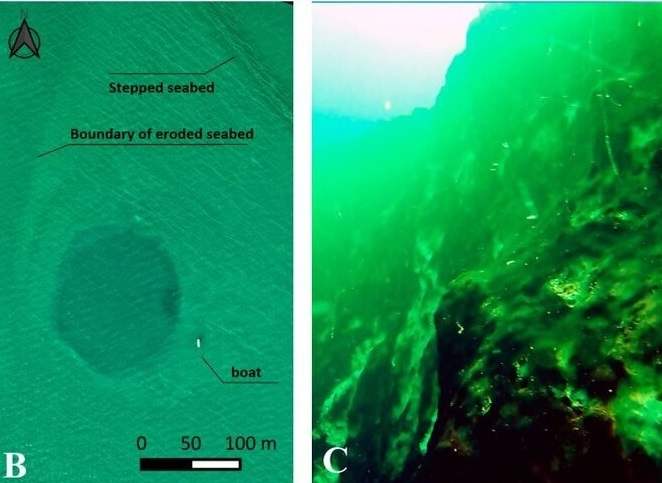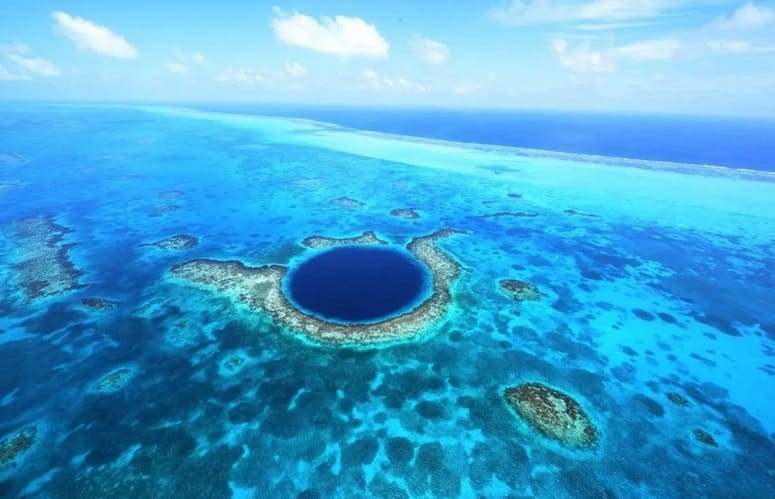In 2023, Taam Ja’ Blue Hole, a giant hole hidden in a bay of the Yucatan Peninsula on the border with Belize was officially discovered by scientists based on ultrasound data and declared the world’s second largest blue hole. But, a little later, experts said they were not completely sure about their findings and what it really is. Let me tell you, this is a mysterious place where there are many myths and theories about aliens and the lost Atlantis civilization.

Viewed from above, the 150-meter-wide Taam Ja’ Blue Hole off the southeastern coast of Mexico resembles an iris-rimmed pupil around the blue sea floor.
The hole is so deep that even sound normally emitted in water cannot hit the bottom. Taam Ja’ absorbs the echoes of high-frequency acoustic waves before they reach a depth of more than almost 275 meters. One reason for this may be the presence of pycnoclines (sharp boundaries created by water of different densities that scatter acoustic signals).

To find out how far the dark hole extends, scientists from the State Research Centre of the Universidad de La Frontera in Mexico docked a ship in the centre of this “eye” in December 2023 and lowered a cable; when all 500 meters of cable were deployed, the device had not yet reached the bottom!

The device sank 420 meters below the sea surface because the limestone and gypsum walls of the Taam Jha Blue Hole do not slope straight down but at a slight angle.
Researchers found that the bottom has not yet been reached, but next time, underwater robots will be able to lower equipment to even greater depths, and experts will try to “reach the bottom” again.
There is a cluster of sinkholes around the Chicxulub crater, and while scientists don’t yet know what caused them, they suspect that the impact that killed the dinosaurs and many other animals may have influenced the strange geology of the region today.
A once extinct creature laid the foundation for an entirely new biological niche. Despite the dark, low-oxygen environment, the cenote is home to a thriving ecosystem. The same can be said for neighboring Tamu Daza.
Biologists continue to explore blue holes around the world to better understand their communities, and in some cases, encounter entirely new forms of life.
“The depth of the blue hole at Tamu Daza may create a unique biotope with biodiversity that needs to be studied in combination with physical and geomorphological processes,” researchers say.
And an expert team is ready to dive in. Let’s see what the world finds and what is hidden.

About the Author
Manish love to write and he is a Civil Servant. Users can follow Manish on Instagram ![]()
Claire Redfield: Who is she in the game Resident Evil ?
Chris Redfield, one of the most well-known canon characters in the Resident Evil universe, came…
Amazing Cosplay on Mileena from Mortal Kombat
The fighting game and movie franchise Mortal Kombat features a character named Mileena. She is…
Korean Women’s Secrets to Maintaining a Fit and Healthy Lifestyle
Korean women are recognised for their slim and balanced bodies and bright complexions. Many people…
7 things that scientists can’t answer
The origins of the Universe, the construction of the pyramids, and other mysteries have been…
What if dinosaurs were still alive today?
It’s exciting to imagine that if that deadly asteroid hadn’t hit Earth 66 million years…
What would have happened if Hitler had not started World War II?
Hitler is one of the most important figures in human history, causing World War II…






